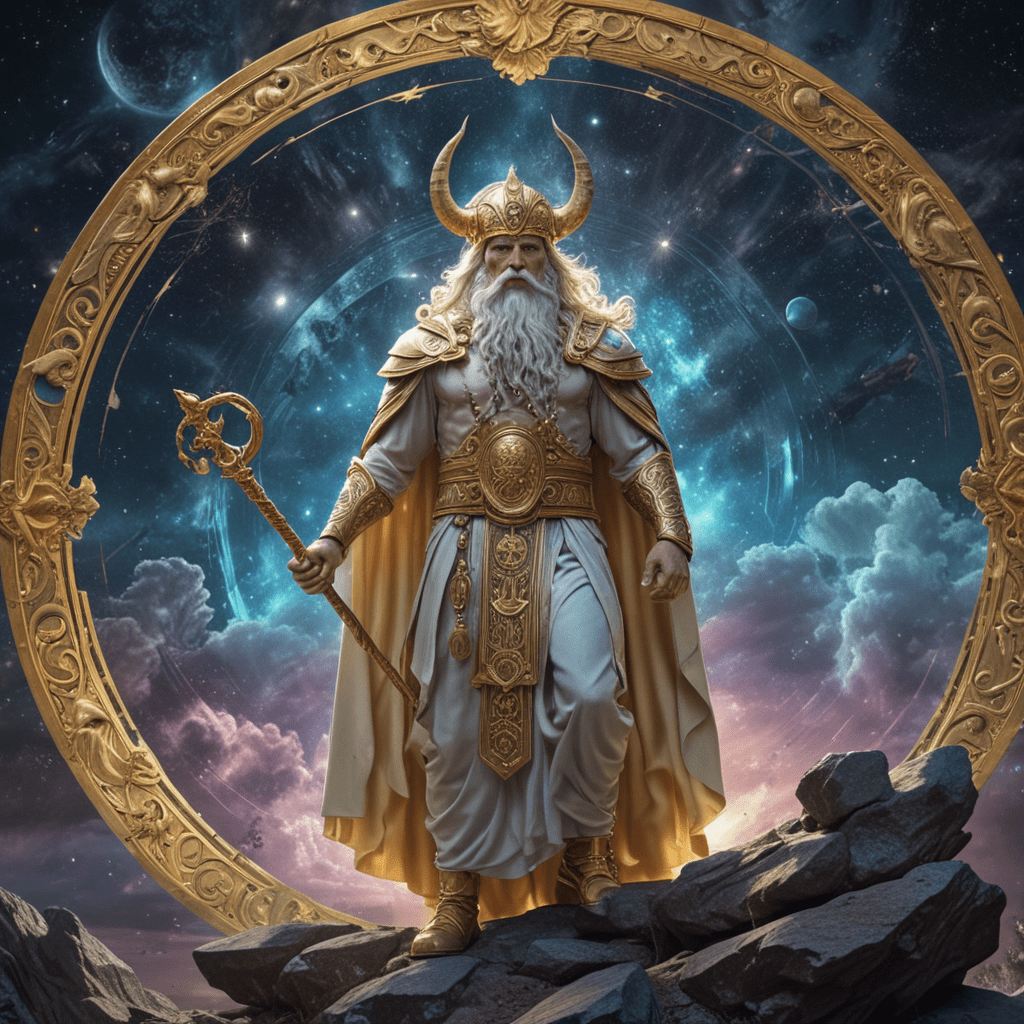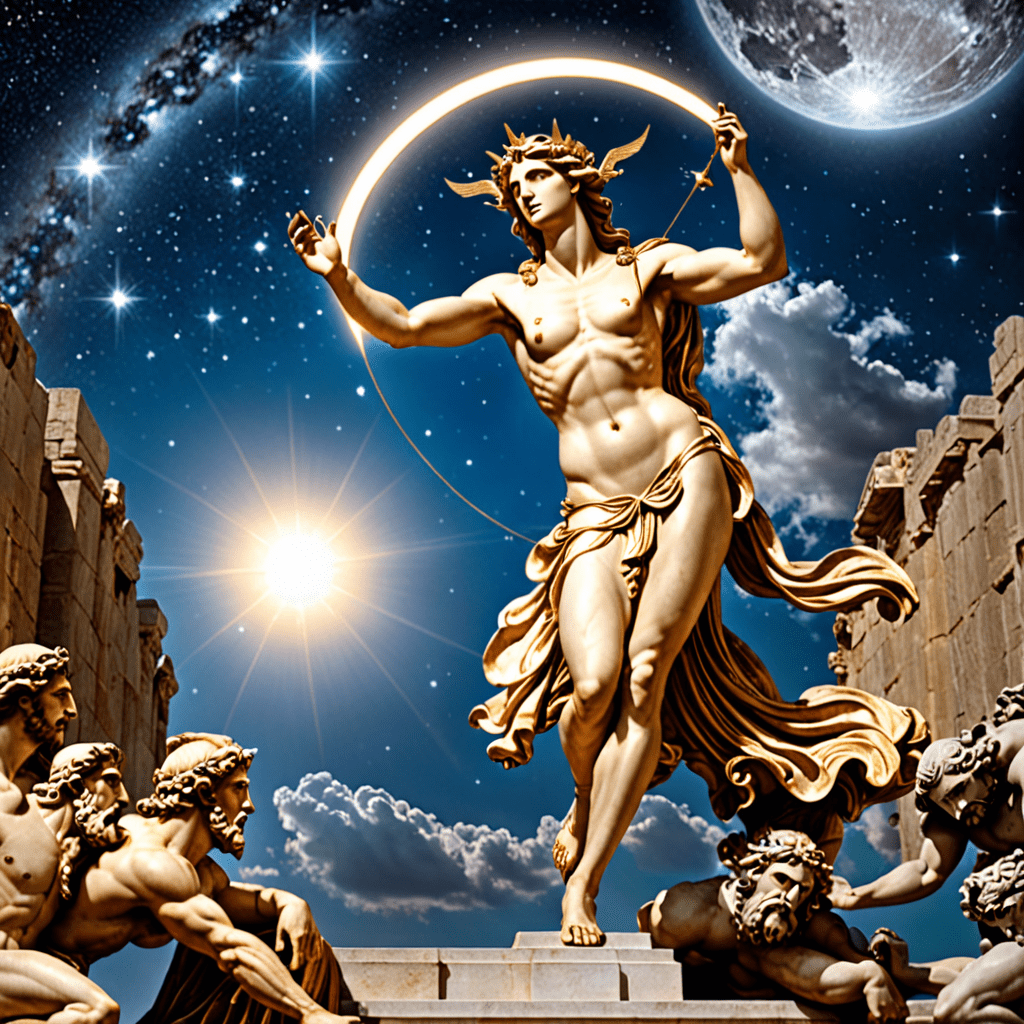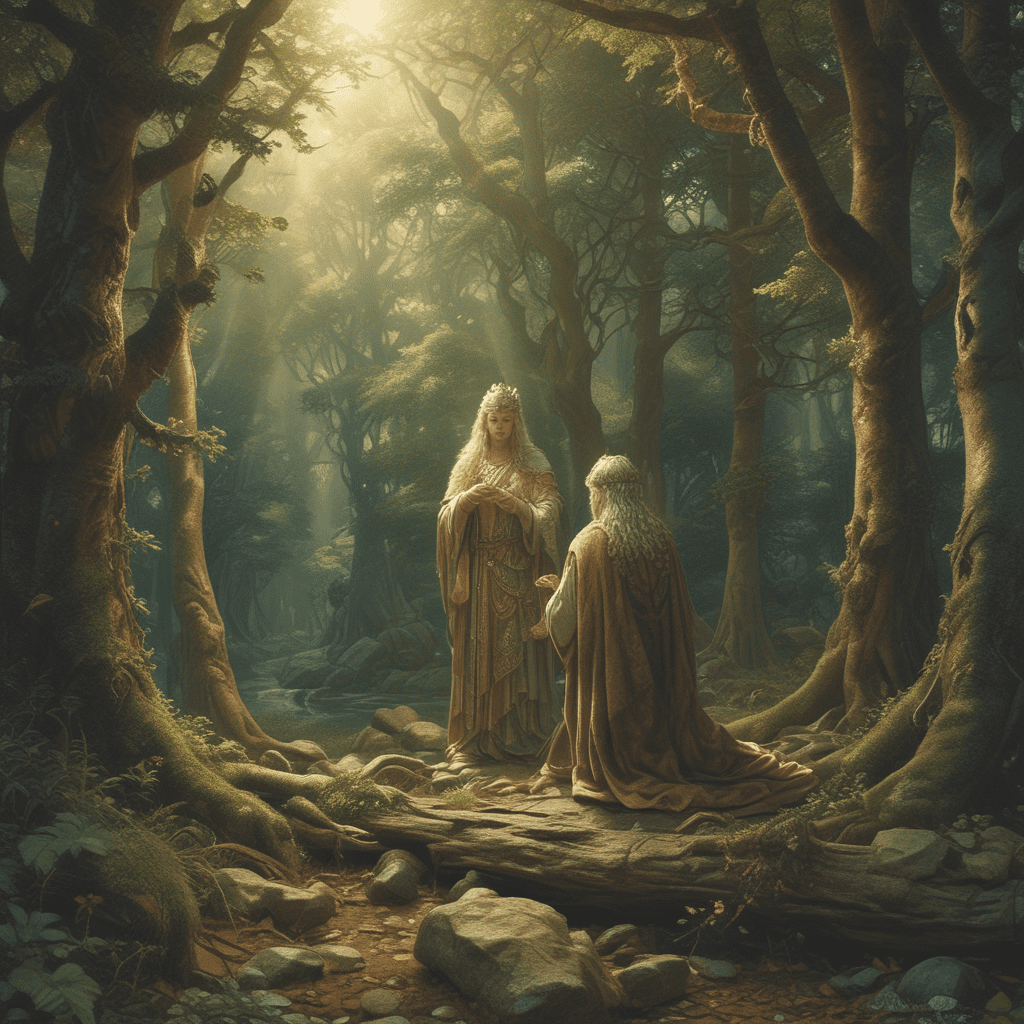The Cosmic Egg: Birth of the Universe
Finnish mythology recounts the origins of the universe through the tale of the Cosmic Egg. According to this myth, the primeval world existed in a state of chaos, symbolized by a vast void filled with swirling cosmic energies. At the center of this chaotic expanse lay the Cosmic Egg, representing the potential for all that would come into existence.
From the depths of the egg emerged Väinämöinen, the eternal sage, who sang powerful incantations that shaped the elements and gave birth to the physical world. Through his songs, the cosmos expanded and order emerged from chaos. Earth and sky were separated, the stars and planets found their place in the heavens, and life began to flourish on the newly created Earth.
Ukko: The Sky God and Thunderer
Ukko, known as the "Old Man of the Sky," is the supreme deity in Finnish mythology. He reigns over the heavens and controls the forces of nature, particularly thunder, lightning, and rain. Ukko's wrath is manifested in the destructive power of thunderstorms, but he also brings blessings in the form of fertility and bountiful harvests.
Ukko is depicted as an elderly figure with a white beard and long flowing hair. He wields a mighty hammer, which he uses to create thunderbolts and illuminate the sky. Ukko's symbol is the oak tree, a sacred and respected element of Finnish folklore.
Ilmarinen: The Master Craftsman and Smith
Ilmarinen is the most skilled craftsman in Finnish mythology, known for his exceptional ability with metalworking and forging. He is often associated with the creation of magical objects and artifacts, including the Sampo, a mythical artifact of abundance and prosperity. Ilmarinen is also a talented builder and is said to have constructed the dome of the sky.
Ilmarinen's character embodies the creative spirit and the importance of craftsmanship in Finnish culture. His ability to shape and transform metals speaks to the human potential for innovation and artistry.
Louhi: The Mistress of Death and the Underworld
Louhi, also known as Tuoni's Wife, is the mysterious and formidable ruler of Tuonela, the realm of the dead in Finnish mythology. She controls death and fate and is feared by both mortals and gods alike. Louhi is often portrayed as a wise but manipulative figure who tests and challenges those who dare to enter her realm.
Louhi's domain, Tuonela, is described as a cold, dark, and foggy underworld where the dead reside. It is surrounded by the Tuonela River, which must be crossed by souls seeking to enter or leave the realm of the dead.
Väinämöinen: The Wise Sage and Singer
Väinämöinen is a central figure in Finnish mythology and is considered the embodiment of wisdom, knowledge, and poetic artistry. He is a great sage and seer, possessing an understanding of the past, present, and future. Väinämöinen's songs have the power to create, transform, and heal.
Väinämöinen's character represents the value of wisdom and learning in Finnish culture. He is depicted as a wise old man, often depicted playing the kantele, a traditional Finnish string instrument, which represents the power of music and storytelling.
Joukahainen: The Tricky Hunter and Trickster
Joukahainen is a mischievous and cunning trickster figure in Finnish mythology. He is known for his quick wit, cunning, and ability to outsmart others. Joukahainen's character represents the darker aspects of human nature, including deceit, trickery, and manipulation.
Joukahainen plays a central role in many Finnish myths and tales. One of his most famous exploits involves his attempt to trick Väinämöinen into a marriage with his beautiful sister, Aino. Joukahainen's cunning plan fails, but his actions lead to a tragic outcome for Aino.
Marjatta: The Daughter of the Sun
Marjatta is a significant female figure in Finnish mythology, representing the power of nature and the renewal of life. She is the daughter of the Sun and the personification of fertility and abundance. Marjatta's story symbolizes the cyclical nature of life and the promise of new beginnings.
In Finnish mythology, Marjatta is often associated with the spring season and the arrival of new life. She is depicted as a beautiful and fertile woman who brings joy and vitality wherever she goes. Her story serves as a reminder of the power of nature and the importance of cherishing the beauty of the natural world.
Sampo: The Magical Mill of Abundance
The Sampo is a legendary artifact in Finnish mythology, representing prosperity, wealth, and abundance. It is described as a magical mill that can produce anything its owner desires, including gold, grain, and salt. The possession of the Sampo brings great fortune and power, but it also incurs the wrath of those who seek to steal it.
The Sampo plays a central role in the Finnish epic poem, the Kalevala. In the poem, the Sampo is stolen by the evil Louhi, and Väinämöinen and his companions embark on a quest to retrieve it. The Sampo symbolizes the pursuit of wealth and prosperity, but it also warns of the dangers of greed and envy.
The Kalevala: Epic of Finnish Mythology
The Kalevala is the national epic poem of Finland and one of the most important works of Finnish literature. It is a compilation of myths, legends, and folk tales that were collected and assembled by Elias Lönnrot in the 19th century. The Kalevala tells the story of Väinämöinen, Ilmarinen, and their companions as they journey through the mythical world of Finnish folklore.
The Kalevala is a rich and complex work that offers insights into the Finnish culture, mythology, and worldview. It is a celebration of Finnish history and traditions, and it has played a significant role in shaping the Finnish national identity.
Legacy and Influence of Finnish Mythology
Finnish mythology has had a profound influence on Finnish culture, art, and literature. The stories and characters of Finnish mythology continue to be celebrated and reimagined in modern times. Finnish mythology has also inspired numerous works of art, including paintings, sculptures, and music.
In addition, Finnish mythology has been the subject of academic research and analysis. Scholars have studied the origins, structure, and significance of Finnish myths and legends. This research has helped to deepen our understanding of Finnish culture and the role of mythology in human societies.
FAQ
Q: What is the main theme of Finnish mythology?
A: The main theme of Finnish mythology is the wisdom of the cosmic order. The myths recount the origins of the universe, the roles of the gods and goddesses, and the importance of living in harmony with the natural world.
Q: Who is the most important god in Finnish mythology?
A: Ukko is the sky god and thunderer, and he is considered the most important god in Finnish mythology. He controls the forces of nature and brings both blessings and curses upon humans.
Q: What is the Sampo?
A: The Sampo is a magical mill that can produce anything its owner desires. It represents prosperity, wealth, and abundance, but it also brings great danger to those who seek to possess it.
Q: What is the Kalevala?
A: The Kalevala is the national epic poem of Finland. It is a collection of myths, legends, and folk tales that tell the story of Väinämöinen, Ilmarinen, and their companions as they journey through the mythical world of Finnish folklore.




